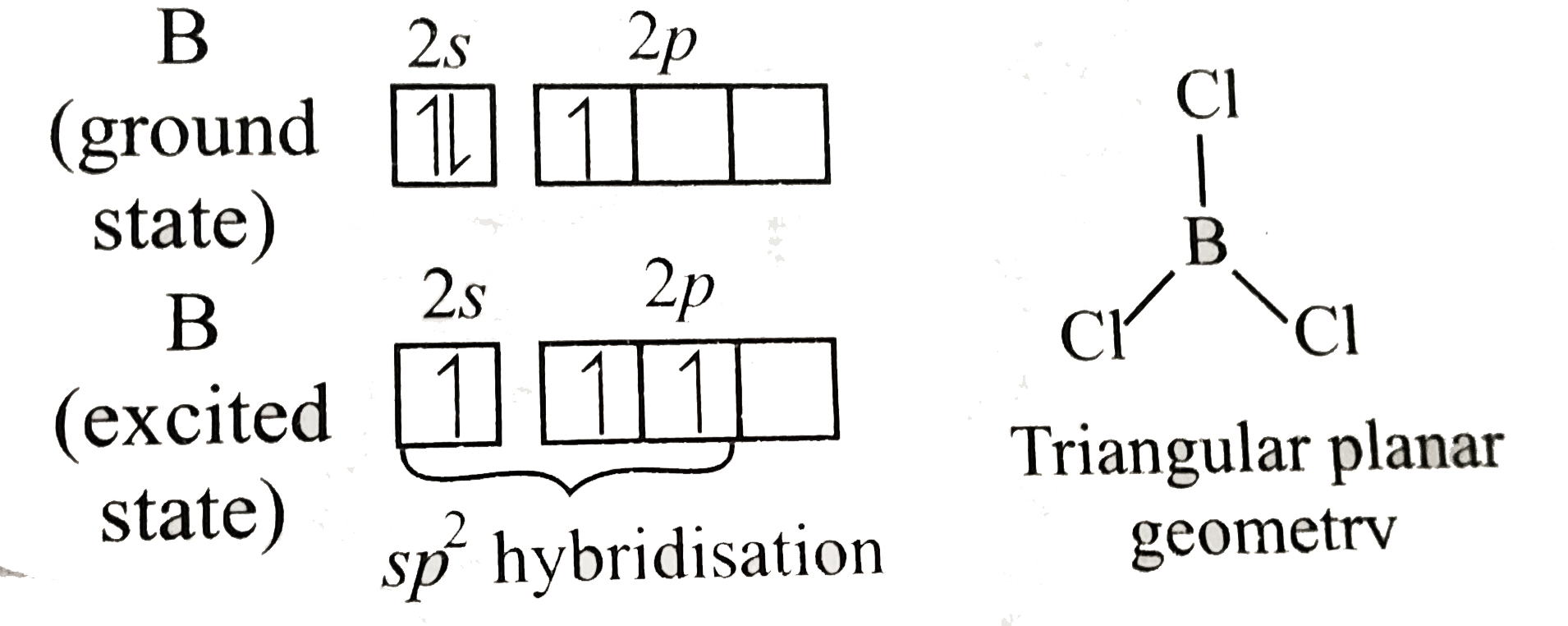What are electron-deficient compounds? Are and electron-deficient species? Explain.
Video Solution
Text Solution

Compounds in which the central atom either does not have eight electrons in the valence shell or which have eight electrons in their valence shell but can expand their coordination number beyond four due to the presence of vacant -orbitals are known as electron-deficient compounds.
In , B has six electrons in the valence shell, thus , behave as an electron deficiant compound.
Due to the presence of vacant orbital, in can accept a pair of electron from any donor molecule or ion and hence can form addition compound or adduct, e.g.
In , the central atom has eight electrons, but it can expand its coordination number beyond due to the presence of vacant orbital. So should behave as an electron-deficient compound. However, it does not accept two more ions to form because of the following two reasons:
a. Six large size ions cannot be accommodated around small atom.
b. Due to larger size of , interaction between lone pair of chlorine atom and -orbital of -atom will be weak.
|
Updated on:21/07/2023
Topper's Solved these Questions
- BOOK - CENGAGE CHEMISTRYCHAPTER - APPENDIX - INORGANIC VOLUME 1EXERCISE - Exercise very short70videos
APPENDIX - INORGANIC VOLUME 1
- BOOK - CENGAGE CHEMISTRYCHAPTER - APPENDIX - INORGANIC VOLUME 1EXERCISE - Exercise Short146videos
APPENDIX - INORGANIC VOLUME 1
- BOOK - CENGAGE CHEMISTRYCHAPTER - ALKYNESEXERCISE - Exercises (Archives - Analytical and Desriptive Type)4videos
ALKYNES
- BOOK - CENGAGE CHEMISTRYCHAPTER - ATOMIC STRUCTUREEXERCISE - Concept Applicationexercise(4.3)19videos
ATOMIC STRUCTURE
Similar Questions
Knowledge Check
- Question 1 - Select One
The electron deficient compound is
ANH3BPH3CB2H6DC2H6 - Question 2 - Select One
The electron deficient compound is
ANH3BPH2CB2H6DC2H6 - Question 3 - Select One
Which one of the electron deficient compounds
AIClBNH3CBCl3DPCl3

